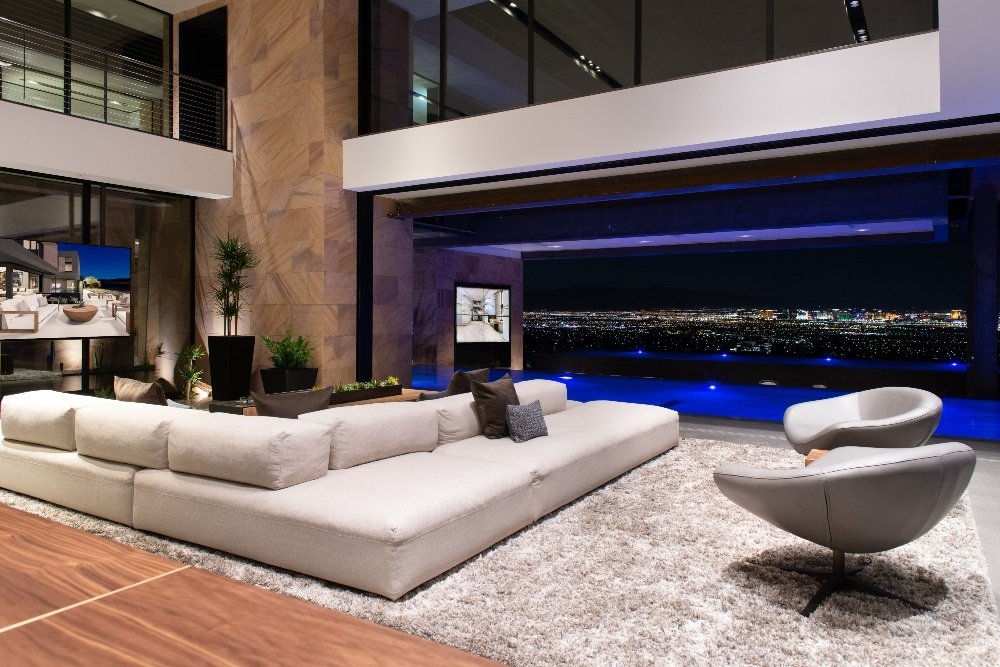In the age of technological leaps, our homes have quietly become the battleground for devices and systems that promise to revolutionize the way we live. Smart home solutions, once the domain of science fiction, are now more sophisticated and accessible than we could have imagined. In this post, we will take a deep dive into the evolution of smart home technology, explore the cutting-edge solutions available today, and peek into the future of how our dwellings will interact with us and with each other.
Smart Homes Past and Present
Smart home technology has come a long way since the first remote-controlled garage doors and thermostat timers. What began as simple, single-use applications have evolved into intricate systems that can regulate an entire household. Today, the market is flooded with devices and platforms that allow homeowners to connect, automate, and control every aspect of their home environment. Voice-activated virtual assistants, learning thermostats, and security cameras that alert you on your smartphone are just the beginning.
The convenience of controlling everything from the lights to the music with a simple voice command is just the tip of the iceberg. The real value of smart home solutions is in how they can learn, adapt, and anticipate our needs. They not only offer the luxury of a technologically advanced living space but also the promise of a more efficient and sustainable lifestyle.
The Tech that Took Us Here
Smart homes didn’t spring into existence overnight. They’re the result of decades of incremental advances in a variety of fields. Early iterations like X10, a communication protocol for home automation, laid the groundwork for today’s sophisticated systems. Companies like Honeywell and IBM started exploring home automation as early as the 1970s, but it was the internet revolution and the subsequent explosion in wireless technology that really made the smart home a reality.
Today, IoT (Internet of Things) devices have become the norm rather than the exception. We’ve seen the gradual advent of technologies such as smart appliances, wearables, and the interconnected infrastructure to support them. This enables our homes to not only become smarter but to do so reliably and with minimal intervention from us.
Sustainable Smart Homes: The Environment in the Living Room
One of the most significant aspects of the smart home isn’t the convenience, but the potential to contribute to a healthier planet. Energy management systems that track usage and adapt to reduce waste, water sensors that prevent leaks, and LED lighting solutions that use a fraction of the energy of traditional bulbs are just the beginning. Suppliers and manufacturers in the smart home space are increasingly aware of the ecological impact of their products and are engineering solutions to minimize it.
Smart technology isn’t just about being environmentally responsible; it’s also about being resourceful. By optimizing the way homes use energy and materials, we’re moving towards a future where our dwellings are not just clever, but sustainable.
The Role of AI and Machine Learning
The future of smart homes is intelligent, and this is where AI and machine learning come into play. These technologies are the brains behind the operation, learning from our behaviors, predicting our desires, and making decisions on our behalf. AI in smart homes won’t just remember to turn the lights off when you’re not in the room; it will know to turn off lights that you usually leave on.
These systems offer a level of personalization that can enhance our day-to-day existence in a way that was once the stuff of dreams. The synergy between the technologies and the services they offer is continually refining and evolving, which means our homes are set to become even more indispensable parts of our lives in the future.
Life in a Smart Home: The Daily Revolution
The true test of any technological innovation is how seamlessly it integrates into our lives. Smart home technology excels in this area, providing a level of convenience that quickly becomes second nature. The ability to set your home to your preferred temperature from your office, to have your coffee machine start brewing as soon as your morning alarm goes off, and to receive a notification when the kids get home from school are all aspects of the modern smart home that enrich our everyday experiences.
Furthermore, the financial benefits of smart home technology cannot be overlooked. For example, a smart thermostat can significantly reduce heating and cooling costs by learning your schedule and preferences, and by optimizing energy use during off-hours. And the more smart devices are plugged into a single ecosystem, the more refined and efficient that ecosystem becomes.
The Security of Connectivity
Connected smart homes offer a new level of home security and peace of mind. With smart lock systems, motion-sensing security cameras, and integrated alarm systems, homeowners can keep an eye on their properties from anywhere in the world. These devices don’t just provide a deterrent to potential intruders; they offer live updates on the state of your home and the ability to respond with appropriate measures.
The future of smart home security is optimistic. Advancements in biometrics, such as fingerprint and facial recognition, are making their way into consumer-level products, offering even more robust security. Additionally, as AI continues to develop, home security systems will be able to more accurately differentiate between real threats and false alarms.
Crafting Your Castle
Personalization is at the heart of smart home technology. Each individual’s needs and preferences are different, and a smart home system should be as unique as the individual it serves. Whether it’s the color temperature of your smart bulbs, the playlist that welcomes you home, or the level of security that makes you feel most comfortable, a smart home should be able to cater to your specific requirements.
The ability to fine-tune your living environment to the smallest detail means that your home becomes less a place you live in, and more a reflection of who you are. The line between user and designer blurs, and in the process, your home becomes an expression of your tastes and your lifestyle.
Making the Transition to Smart Living
For those who haven’t already embraced smart home technology, the thought of transitioning can be daunting. There are so many devices, platforms, and standards that choosing the right set of tools can feel overwhelming. The key is to start small, gradually building up a system that works for you, and ensuring that the devices you choose play nice with one another.
Consulting with technology specialists or beginning with a comprehensive smart home platform that encompasses various devices can help simplify the process. The investment in time and resources will pay dividends over the long term, not just in terms of convenience and functionality, but in the knowledge that your home is operating at peak efficiency.
Conclusion
Our exploration into the realm of smart home solutions leaves us with the realization that we’re only beginning to grasp their full potential. These systems are becoming more prevalent, more sophisticated, and more integrated into the fabric of our daily lives. Their benefits extend beyond mere technological novelty, reaching into the very nature of sustainable living, personalized comfort, and a new era of home security.
We stand on the brink of a new age in domesticity—one where our homes are designed not just to shelter us, but to interact with us, to serve us, and to do so in harmony with the world around them. This future is not a far-off dream; it is within our reach, waiting to be unlocked, and integrated into the homes we live in today. The smart home solutions are not just smart; they’re the seed of a future where the promise of technology and the sanctity of home merge as one.



